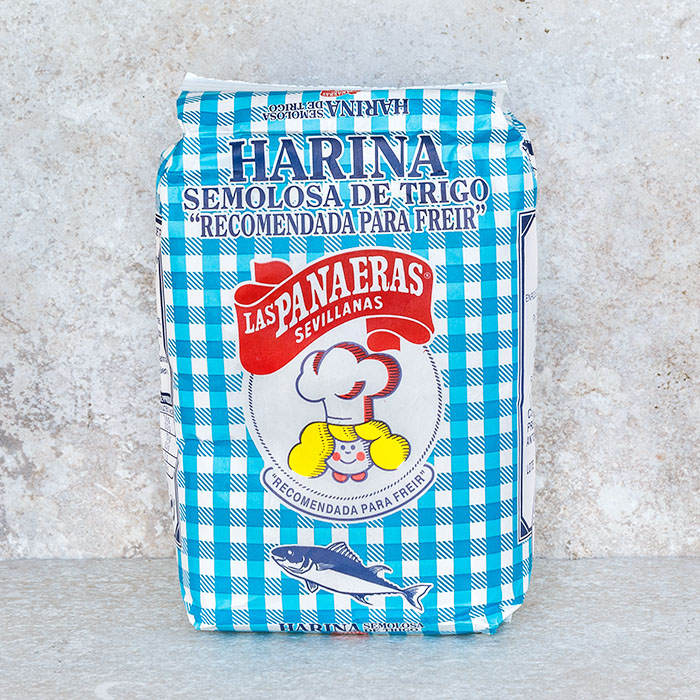In the culinary realm, where the alchemy of flavors orchestrates delectable creations, understanding the intricacies of ingredients is paramount. Flour, a fundamental component in countless baked goods and delectable dishes, holds a prominent place in every kitchen. Whether you’re a seasoned baker or a culinary novice, grasping the correct translation of flour in Spanish is crucial for successful communication and precise recipe execution.

Image: www.bascofinefoods.com
This comprehensive guide will illuminate the linguistic nuances of flour in Spanish, delving into its historical roots, regional variations, and practical applications. Prepare to expand your vocabulary and conquer the culinary challenges that lie ahead, ensuring that your culinary creations bloom with vibrant authenticity.
Historical Evolution of “Flour” in Spanish
The Spanish word for flour, “harina,” traces its etymological journey to the Latin word “farina.” This linguistic lineage reflects the ancient significance of flour in human civilization, dating back to early agricultural societies where wheat cultivation flourished. Over centuries, “harina” became deeply embedded in the Spanish language, serving as the cornerstone of countless culinary creations and enriching the cultural tapestry of Spanish-speaking regions.
Regional Variations in Flour Terminology
The vast tapestry of Spanish-speaking countries, each boasting unique cultural and linguistic nuances, influences the specific terms used for flour. While “harina” remains the standard word, regional variations add a touch of local flavor to culinary conversations. In Mexico, for instance, “harina” is frequently accompanied by its Nahuatl counterpart, “tlaxcalli,” paying homage to the indigenous roots of flour and its central role in traditional dishes like tortillas.
In Argentina and Uruguay, the term “harina” coexists with the Italian-influenced “farina,” a testament to the rich culinary exchange that has shaped these nations’ food cultures. Spain itself showcases regional variations, with “flor de harina” referring to fine flour and “harina integral” denoting whole-wheat flour, reflecting the diverse culinary traditions that converge within the Iberian Peninsula.
Different Types of Flour and Their Uses
The culinary world of flour extends far beyond a singular entity. A multitude of flour varieties cater to specific baking needs, each boasting unique properties that elevate the final product. Comprehending the nuances of each flour type empowers bakers with the ability to craft culinary masterpieces that tantalize taste buds and captivate the senses.
All-purpose flour: The versatile workhorse of the baking world, all-purpose flour strikes a balance between protein content and starch, making it suitable for a wide range of baked goods, from fluffy pancakes to rustic breads. Its adaptability makes it a kitchen essential for both novice and seasoned bakers.
Bread flour: As its name suggests, bread flour excels in the realm of bread baking. Its higher protein content translates to a stronger gluten formation, resulting in loaves with a chewy texture and an airy crumb structure. With bread flour, your homemade bread will rise to new heights, showcasing a tantalizing golden-brown crust.
Cake flour: Delicate and finely milled, cake flour yields tender, crumbly cakes that melt in your mouth. Its low protein content minimizes gluten formation, resulting in a soft, velvety texture that complements the sweetness of cakes and other desserts.
Whole-wheat flour: Whole-wheat flour retains the entirety of the wheat kernel, offering a wholesome blend of bran, germ, and endosperm. Its higher fiber content imparts a nutty flavor and chewy texture to baked goods, making it a nutritious choice for health-conscious bakers.
Self-rising flour: This convenient flour incorporates baking powder and salt, eliminating the need for additional leavening agents. Self-rising flour streamlines the baking process, ensuring consistent results for quick breads, biscuits, and other treats.

Image: ambrosiabaking.com
Practical Applications of Flour in Culinary Delights
Flour’s versatility extends beyond baked goods, gracing a multitude of culinary creations with its transformative touch. Its thickening properties make it an indispensable ingredient in sauces and gravies, adding richness and depth to savory dishes. A dusting of flour breathes new life into fried foods, bestowing them with a golden-brown exterior and a satisfying crunch.
In Asian cuisine, flour plays a pivotal role in the creation of noodles and dumplings. Delicately kneaded and shaped, these flour-based creations immerse diners in a symphony of textures and flavors. Flour also forms the foundation of tortillas, a cornerstone of Mexican cuisine, serving as a versatile canvas for an array of fillings and toppings.
Cultural Significance of Flour in Spanish-Speaking Communities
Flour transcends its culinary significance, weaving itself into the cultural fabric of Spanish-speaking communities. In many regions, traditional festivals and celebrations revolve around the harvest and preparation of flour. The “Fiesta de la Vendimia” in Spain exemplifies this cultural connection, showcasing the transformation of grapes into wine and flour, two pillars of Spanish gastronomy.
Flour also holds symbolic meaning in various cultural practices. In some parts of Latin America, newlyweds are greeted with showers of flour as a blessing for fertility and abundance. The act of sharing bread, a product crafted from flour, represents the bonds of community and the warmth of human connection.
How To Say Flour In Spanish
Conclusion
Flour, a culinary chameleon of remarkable versatility, occupies a central position in the culinary traditions of Spanish-speaking communities worldwide. Embracing the nuances of its Spanish translation, “harina,” opens doors to the rich tapestry of flavors and cultural practices that flour embodies. Whether you’re baking a masterpiece or exploring the depths of a traditional dish, understanding the correct translation of flour is an invaluable asset. So, as you embark on your culinary adventures, remember the linguistic subtleties that empower you to navigate the world of flour with confidence and creativity.
Embrace the joy of baking, experiment with different flour varieties, and delve into the rich cultural heritage that flour represents. Let your passion for food guide you as you unlock the culinary potential of flour, one delicious creation at a time.